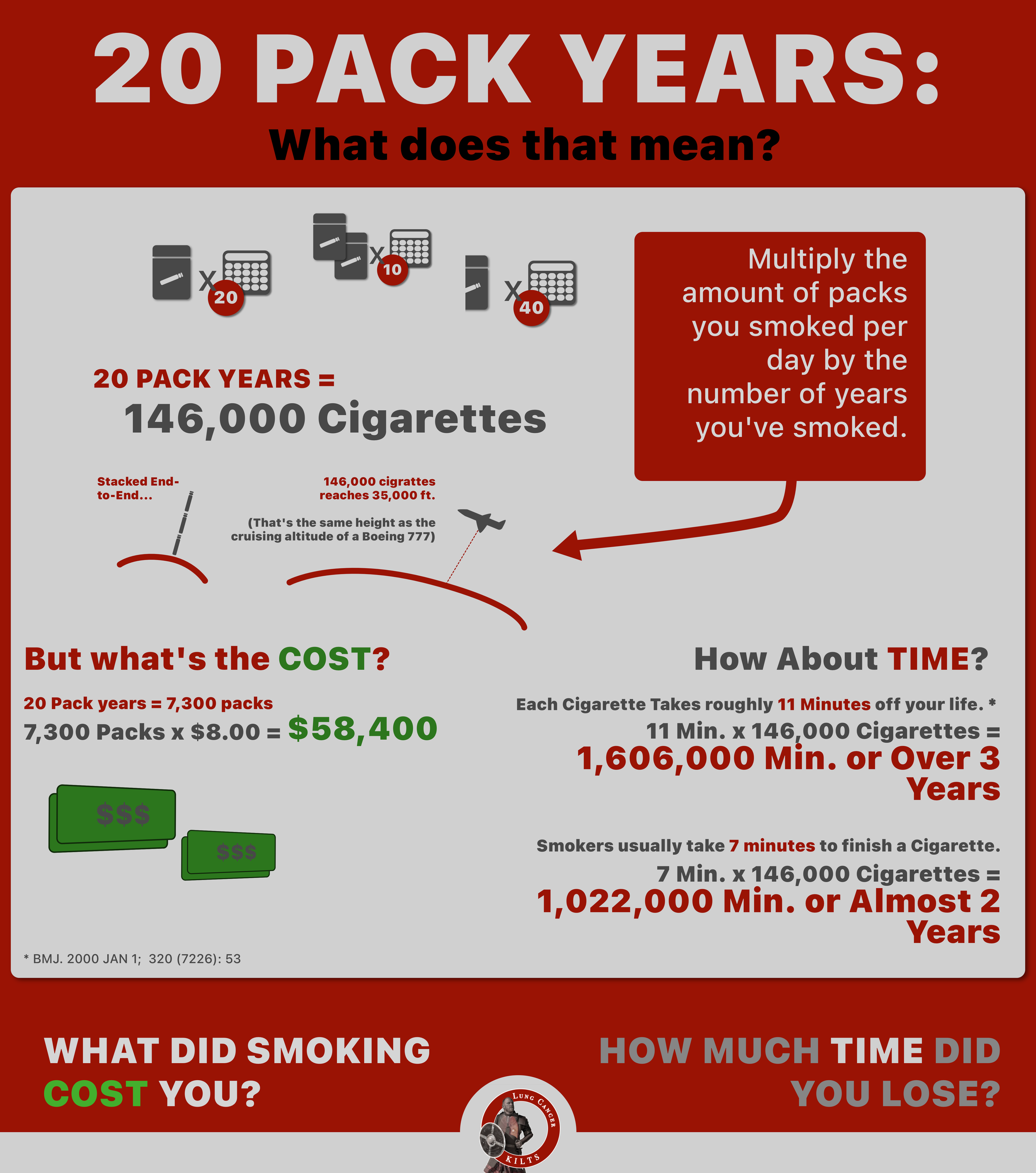What is a “Pack Year”?
In deciding whether or not you should be screened for lung cancer, one of the measures we use is called a “Pack Year”. But what IS a pack year?
A “pack year” is an odd statistic that’s difficult to accurately quantify. It is calculated by multiplying the number of years a person smoked by how many packs per day they smoked. For example, a one pack a day smoker for 20 years has a 20 pack year history. But so does the half a packa day smoker for 40 years OR the 2 pack a day smoker for 10 years. But we all know how many packs a person smokes over their lifetime varies. It is ok to use the highest “pack per day” a person smoked for the equation if they smoked that amount for much of time. It’s hard to quantify but guesstimates are ok.
It’s important because only those exposed to this amount of cigarette smoke are known to benefit from lung cancer screening. To screen people who have not smoked this much risks exposing them to unnecessary radiation without decreasing their risk of dying from lung cancer.
But what is a 20 pack year history put in other terms? Well, it is 146,000 cigarettes or 7,300 packs or 730 cartons. The average cost of cigarettes is $8.00 per pack which means a 20 pack year smoker has spent $58,400 on cigarettes (https://worldpopulationreview.com/state-rankings/cigarette-prices-by-state).
Predictions state each cigarette decreases a person’s life span by 11 minutes (BMJ. 2000 Jan 1; 320(7226): 53). That means a 20 pack year smoker has lost 1,606,000 minutes of their life. That’s 26,766.7 hours or 1,115.3 days or 3 years. People also smoke each cigarette for about 7 minutes which means a 20 pack year smoker has spent 1,022,000 minutes smoking. That’s 17,033.3 hours or 709.7 days or 1.94 years smoking.
Why do people smoke when it costs this much, loses this much life and takes this much time? It’s an addiction to nicotine. One of the strongest addictions known, but with help, it can be conquered before cigarettes conquer the smoker.

